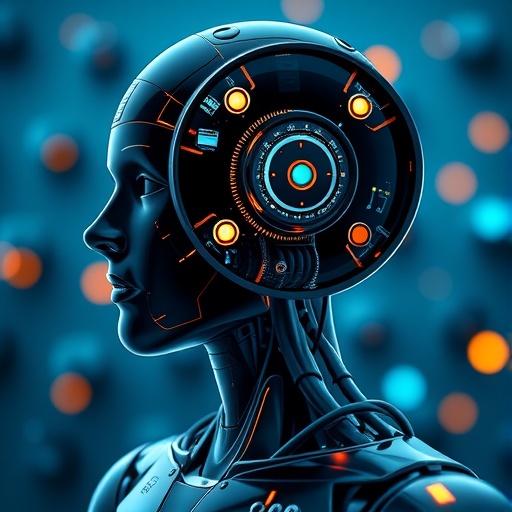In the rapidly evolving landscape of the 21st-century workplace, the dynamics of human interaction with technology are experiencing unprecedented complexity. Two scholars from the University of Kansas, Cameron Piercy and Reaia Turner-Leatherman, delve into this intricate relationship in their groundbreaking research article titled “Socio-Technical Exchange with Machines: Worker Experiences with Complex Work Technologies.” Their study, soon to be published in the reputable Human-Machine Communication Journal, introduces a transformative lens for understanding communication—not just between humans but extending to interactions with sophisticated technological systems that populate modern workplaces.
The foundation of their inquiry lies in reexamining classical paradigms of communication, notably Social Exchange Theory (SET), first formulated in the 1960s. SET traditionally articulates human interactions based on costs and rewards—individuals engage with others perceived as beneficial and avoid those who represent a cost or burden. While this framework has robust explanatory power in interpersonal communication, Piercy and Turner-Leatherman argue that it falls short in accounting for the nuances of human-machine interactions, especially as machines become ubiquitous collaborators in professional settings.
Through an observational study involving nearly two dozen participants from diverse occupational backgrounds, the researchers probed how individuals conceptualize and relate to the “complex technologies” integral to their work. This empirical approach unearthed a critical insight: people formulate what the authors term “machine heuristics.” These heuristics are cognitive shortcuts that enable workers to evaluate machines’ reliability, efficiency, and appropriateness for various tasks. Unlike with human colleagues, these evaluations are often based on consistent patterns of interaction rather than emotional or social feedback.
One of the most compelling revelations of the study is the dualistic perception humans hold toward machines. On one hand, machines are lauded for their objectivity, consistency, and impartiality. Workers appreciate that machines deliver predictable outputs, immune from human biases or emotional inconsistency. This fosters trust in machines for administrative or routine functions where subjective judgment is less critical. However, on the flip side, there remains skepticism about machines’ capacity to exercise nuanced judgment, empathy, and creativity—qualities traditionally associated with human uniqueness.
What sets this new theory apart is its recognition that human-machine relationships are not static or monolithic. Piercy explains that repeated interactions with the same technology lead to the formation of specific, task-oriented beliefs about that machine’s capabilities and limitations. Workers begin to categorize technologies based on their suitability for particular roles, discerning where machines excel and where human expertise remains indispensable. This dynamic assessment contrasts sharply with the traditional SET premise, which assumes uniform reciprocity and conscious calculation of rewards and costs between human actors.
Interestingly, the researchers identify situations in which machines outperform humans as collaborators. For example, when tasks are simple, procedural, or involve sensitive or potentially embarrassing queries, workers tend to prefer machine interaction over human engagement. Such preferences speak to the growing contextual reliance on technology that simultaneously alleviates social discomfort and streamlines workflow—an evolution that challenges our conventional understanding of workplace communication.
Piercy and Turner-Leatherman’s proposed Socio-Technical Exchange (STE) theory pivots on the premise that interdependence with machines is an emerging social contract. Unlike human relationships, machines do not engage in reciprocal judgment or emotional exchange. This fundamental asymmetry necessitates new theoretical models that capture the unique cognitive and communicative mechanisms underlying human-machine interaction in professional environments.
The timing of this study, conducted prior to the rampant integration of advanced artificial intelligence systems like Large Language Models (e.g., ChatGPT), underscores its significance. Despite the absence of these AI tools during data collection, the findings hint at intrinsic human tendencies to develop mental models encompassing both human and machine collaborators. Piercy suggests that as AI technologies become more sophisticated and socially embedded, future research must grapple with how these evolving capabilities reconfigure the boundaries of Socio-Technical Exchange.
Building on this foundational work, Piercy has established and currently directs the Human-Machine Communication Lab at the University of Kansas. Leveraging grant funding, his team is designing quantitative studies to empirically test and refine the STE theory. By integrating diverse methodologies and interdisciplinary perspectives, the lab aims to uncover the mechanisms shaping human affinity, trust, and reliance on technological agents in work contexts.
The ramifications of this research extend beyond academic theory into practical workplace design and technology deployment. Understanding the heuristics workers form about complex work technologies can guide developers and organizational leaders in creating systems that align better with human expectations and communication preferences. Moreover, recognizing when machines serve as superior collaborators for certain task types could revolutionize task allocation and workflow optimization in various industries.
This emerging discourse also invites a critical reflection on the role of “human uniqueness” in increasingly automated and AI-augmented workplaces. While machines may excel at consistency and efficiency, the human ability to navigate ambiguity, exercise empathy, and engage in creative problem-solving remains vital. The STE framework accommodates this balance, suggesting a complementary rather than adversarial relationship between human workers and their machine counterparts.
In sum, “Socio-Technical Exchange with Machines” provides a timely and necessary theoretical advancement in the study of workplace communication. It challenges researchers and practitioners alike to reconsider the traditional human-centric models and embrace a more nuanced understanding of sociotechnical interactions. As workplaces continue to integrate complex technologies, the insights from Piercy and Turner-Leatherman’s study will prove invaluable in shaping the future of human-machine collaboration.
Subject of Research: People
Article Title: Socio-Technical Exchange with Machines: Worker Experiences with Complex Work Technologies
News Publication Date: 29-Aug-2025
Web References: http://dx.doi.org/10.30658/hmc.10.3
Image Credits: Dutch Ministry of Foreign Affairs
Keywords: Communications, Social sciences




